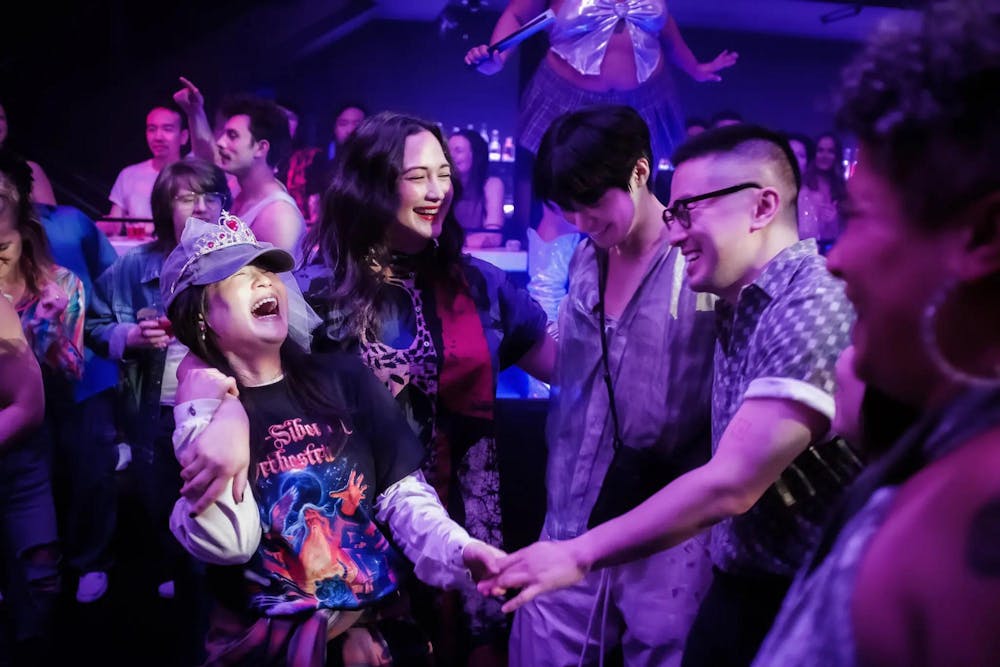In 1993, Taiwanese director Ang Lee released “The Wedding Banquet” — a major hit among both critics and audiences that received numerous accolades, including a nomination for Best Foreign Language Film at the Academy Awards. Since its release “The Wedding Banquet” has been celebrated for its exploration of themes like immigration and interracial relationships, as well as Asian American sexuality and tradition amid the ongoing AIDS crisis and widespread negative views of same-sex relationships.
Now in 2025, writer and director Andrew Ahn has recently released a modernized version of the film. The older film follows Wai-Tung Gao as he enters a fake marriage agreement with his tenant Wei-Wei to appease the expectations of his Chinese parents and hide his romantic relationship with Simon, a white Jewish man. The 2025 rendition of the film follows a similar narrative, but possesses a more nuanced take on queer partnerships and parent-child relationships in immigrant households.
This new version of “The Wedding Banquet” follows one gay couple — Chris (Bowen Yang) and Min (Han Gi-chan) — and one lesbian couple — Angela (Kelly Marie Tran) and Lee (Lily Gladstone) — as they work through a complicated deal in which Min plans to marry Angela to obtain his green card and in turn, Angela and Lee hope to receive compensation to pay for another round of in vitro fertilization, or IVF.
“The Wedding Banquet” illustrates the generational gap between immigrant parents and their children, especially when it comes to the expectations and traditions that are prevalent in many Asian American households. The film’s characterization of Min is a direct reflection of these imposed expectations: He agrees to marrying Angela in order to please his family instead of coming out, something he believes his family will view as a disgrace.
Although Ahn weaves vulnerable moments of reconciliation and growth throughout the plot, the film assigns some version of generational trauma to every Asian American character in the movie, providing a improbable depiction of immigrant upbringings based on the false assumption that all immigrant children experience some form of parent-child trauma. For instance, while Min is forced to conceal his queerness, Angela is shunned by her mother for her sexual orientation. In the meantime, Chris is left to vent his personal problems to his cousin Kendall (Bobo Le), his only confidante.
These themes of trauma are evident in the way both Min and Angela interact with their Korean and Chinese families, respectively. Through the constant association of anything atypical as “American,” Ahn creates a setting in which cultural divides are a strong presence in the lives of the characters, albeit in a cliche manner.
Touching moments — such as Angela and Lee talking about becoming parents and Min and Chris getting married — are broken up by cliche one-liners and predictable plot points, giving insight into the ending of the movie in an unsatisfactory way. These cliches also play into a stereotypical view of homosexuality, with Chris being portrayed as an effeminate gay man who uses phrases such as “it’s giving mother.”
Ultimately, “The Wedding Banquet” attempts to weave together the lives and plotlines of many characters, which unfortunately results in a movie with no real core. From the get-go, the characters act in ways that seem to set up future rifts and decisions which, when paired with generic plotlines, contribute to a world where the found family aspect of the film never truly comes through to the viewer. This is only complicated further by the addition of seemingly unnecessary plotlines, such as Chris and Angela sleeping together after a drunken night out, resulting in Angela becoming pregnant.
Despite Ahn’s excellence in curating emotional scenes of understanding and reconciliation between lovers or between parent and child, the lead-up to these tear-jerking moments are short and detached. Arguments spring out of thin air and conversations spiral out of control, as if nothing is spurring them on except the need for a certain plotline to take place. But when moments of raw vulnerability do come around, they prove to be both nostalgic and emotionally complex for the characters and viewers alike.
In attempting to tackle too many plotlines at once, Ahn creates a relatable sense of messiness that — though atypical for a coming-of-age film — shows audiences it is okay to not have everything figured out in their thirties. The film demonstrates how it is normal to have second thoughts about big decisions and that it is okay to make mistakes — and perhaps that is where the real magic of this movie shines through.





